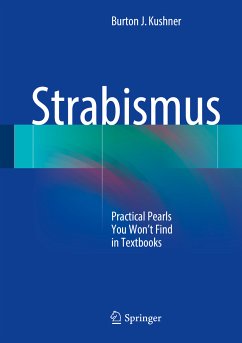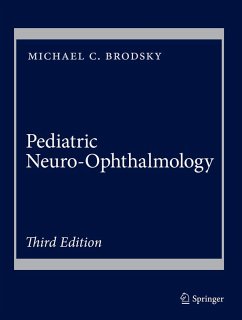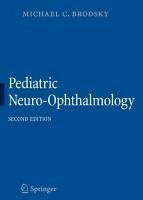
The Evolutionary Basis of Strabismus and Nystagmus in Children (eBook, PDF)
Versandkostenfrei!
Sofort per Download lieferbar
72,95 €
inkl. MwSt.
Weitere Ausgaben:

PAYBACK Punkte
36 °P sammeln!
This text is a comprehensive collection and discussion of scientific essays that define the pathogenesis of common forms of pediatric strabismus and nystagmus in terms of their common evolutionary mechanisms. The goal of this book is to assemble these essays, to provide a definitive source for current clinicians to use along with follow up comments to help direct future scientific research in the field of pediatric ophthalmology. This book includes 20 original essays written by Michael C. Brodsky which mechanistically explain and unify such enigmatic conditions such as infantile esotropia, lat...
This text is a comprehensive collection and discussion of scientific essays that define the pathogenesis of common forms of pediatric strabismus and nystagmus in terms of their common evolutionary mechanisms. The goal of this book is to assemble these essays, to provide a definitive source for current clinicians to use along with follow up comments to help direct future scientific research in the field of pediatric ophthalmology. This book includes 20 original essays written by Michael C. Brodsky which mechanistically explain and unify such enigmatic conditions such as infantile esotropia, latent nystagmus, primary oblique muscle overreaction action, dissociated vertical divergence, infantile nystagmus, and intermittent exotropia in terms of ancestral evolutionary reflexes which become expressed in different ways to generate these disorders.
This collection of essays is poised to become a classic reference, providing the necessary neurological framework for contextualizing unique ocular motor disorder and understanding the evolutionary mechanisms responsible for their development in early childhood.
Written with focused interest for pediatric ophthalmologists and neuro-ophthalmologists, this reference will also find audience with ophthalmologists, neurologists, evolutionary biologists, and neuroscientists.
Dieser Download kann aus rechtlichen Gründen nur mit Rechnungsadresse in A, B, BG, CY, CZ, D, DK, EW, E, FIN, F, GR, HR, H, IRL, I, LT, L, LR, M, NL, PL, P, R, S, SLO, SK ausgeliefert werden.
Alle Preise in Euro und inkl. der gesetzl. MwSt. | Innerhalb Deutschlands liefern wir preisgebundene Bücher versandkostenfrei. Weitere Informationen: bitte hier klicken
Support
Bitte wähle dein Anliegen aus:
Rechnungen
Bestellstatus
Retourenschein
Storno












